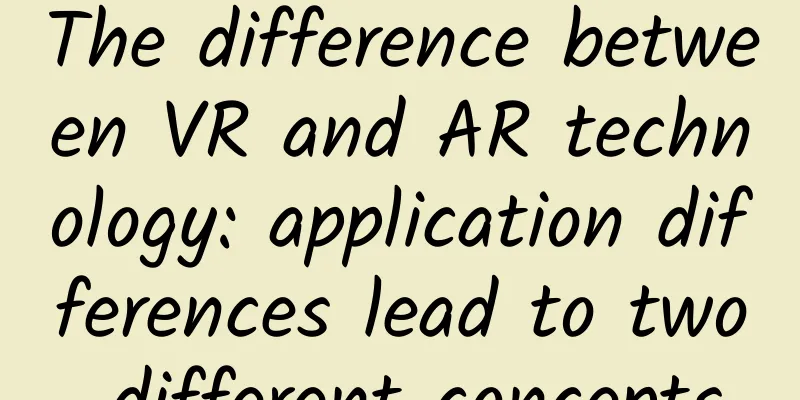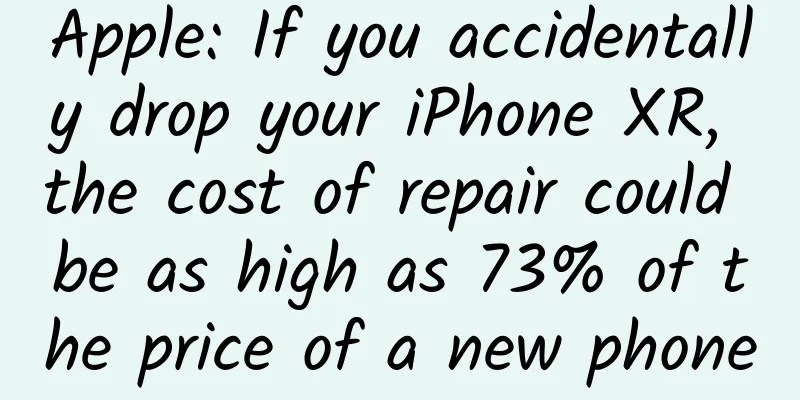The difference between VR and AR technology: application differences lead to two different concepts

|
Regarding virtual reality (VR) and augmented reality (AR), if you are aged between 16 and 55 and still don’t know these two concepts, then it can be asserted that you are about to fall behind the times. But this does not mean that those who know can be complacent. In fact, among the group of people who know this concept, more than 90% of them still cannot figure out the two concepts, including relevant practitioners. VR and AR share similarities VR and AR are essentially the same. If we want to give them a unified definition, we can describe them like this: An experience that uses computer technology to build three-dimensional scenes and allow users to perceive them with the help of specific devices, while supporting interactive operations. From the definitions, we can see that VR and AR have at least two common features, namely "3D" and "interaction". Without any of these features, it cannot be called true VR or AR. This is why some scholars regard VR and AR as one. VR and AR application trends are different Why do all domestic industry reports define VR and AR as two completely different things? Even foreign institutions divide the relevant markets into VR and AR when evaluating them? This is because VR and AR use different technologies to build 3D scenes and display different devices, which bring different user experiences and ultimately lead to different application directions. See the table below: We believe that since animation rendering technology can display all human imagination, VR tends to be more illusory and emotional in application, and is easier to be applied in entertainment (in order to better achieve this goal, VR emphasizes the sense of presence or telepresence); while the technology based on optics + 3D reconstruction mainly reproduces the real world, so AR tends to be more realistic and rational, and is easier to be applied in more serious directions, such as work and training (in order to better achieve this goal, AR emphasizes the integration of reality and virtuality). But this does not mean that VR is not suitable for training. In fact, VR can bring more elements to training, such as simulation of natural disasters, man-made disasters, and major accidents; while AR is more used in conventional training. Google Glass once tried to superimpose fire effects on real scenes, but this obviously did not make users take it seriously; wearing a VR helmet makes it easier for users to get into the role. For developers, the development work done for VR and AR is also quite different. The reason why AR has a small field of view Most people think that AR is very simple to reproduce scenes using optics. In fact, effective AR is a very complex task, requiring computers to reconstruct scenes, identify scene information, and express pre-set virtual elements in appropriate locations; if it also supports interaction, then there are higher requirements for the amount of computing and the results of computing. If AR is to achieve a fully immersive effect, its computing volume is even larger, and it is far from being satisfied by relying solely on mobile terminal performance, so at this stage, it can only reduce the size of the supported scenes - this is also the main reason why the field of view of devices such as Google Glass and even Microsoft HoloLens (MR) is small. The mobile AR products that are now more well-known can only achieve simple AR effects and cannot achieve interaction, so they cannot be called AR in the strict sense. The boundaries between VR and AR are gradually blurring VR and AR have not yet reached their respective peaks, but there are signs of convergence, which is MR mixed reality. Impression Pi from China's Linggan Technology is a VR headset that combines AR technology, but after more than a year of development, a mature version has not yet been released. Microsoft HoloLens glasses are directly operated based on the MR concept, intending to directly break through the boundaries between VR and AR, but at present, they still focus on AR. HTC VIVE released the latest Pre version at CES in January, which directly added a camera, the purpose of which is to bring real environment information to the virtual VR scene. The official statement is: users can wear the helmet to get a drink from the refrigerator, and then pass it to others or drink it themselves. But this has not reached the level of integration of VR and AR, at most it is a "third eye". To realize MR, HTC still has a long way to go. In a pure VR experience, you can add a simulated AR experience, and vice versa. As VR resolution increases to 20K, the boundary between VR and AR will be basically eliminated, bringing users a world that is both real and illusory. Summarize: Distinguishing the concepts of VR and AR will help us understand the direction of related technologies and devices. However, VR and AR have become more diverse now. This article will analyze the differences between VR and AR from the perspective of application. Regarding the author's interpretation, AMD GPU director Chu Hanjin made a good supplement: VR has four major characteristics: multi-sensory, presence, interactivity, and autonomy; these four are indispensable, and VR at this stage is more or less lacking in any of them, but will eventually have all of them. He believes that the essential difference between AR and VR lies in the amount of interaction with the real world and the degree of human perception in the virtual world. If the user perceives the entire virtual world, it is virtual reality. If you are in the real world and use the rules and scenes of the virtual world to interact with the real world, it is augmented reality. As a winner of Toutiao's Qingyun Plan and Baijiahao's Bai+ Plan, the 2019 Baidu Digital Author of the Year, the Baijiahao's Most Popular Author in the Technology Field, the 2019 Sogou Technology and Culture Author, and the 2021 Baijiahao Quarterly Influential Creator, he has won many awards, including the 2013 Sohu Best Industry Media Person, the 2015 China New Media Entrepreneurship Competition Beijing Third Place, the 2015 Guangmang Experience Award, the 2015 China New Media Entrepreneurship Competition Finals Third Place, and the 2018 Baidu Dynamic Annual Powerful Celebrity. |
>>: Why Far Cry Primal is worth buying before The Division comes out
Recommend
Talk about user cognitive cost!
Let me first explain the general logic. Professor...
Killer whales and dolphins: Stupid humans, come in and chat for five cents?
There are many happy elves living in the vast oce...
A healthy summer | The battle against mosquitoes in summer, how much do you believe the rumors?
In the hot summer, in addition to the moonlight i...
How resilient are sharks? They have survived several mass extinction events
Fossils are like masterpieces of nature, not only...
The latest Baidu information flow product manual, giving you a comprehensive understanding of Baidu products
This article shares with you the latest " Ba...
Android bottom navigation bar implementation (I) BottomNavigationBar
The use of the BottomNavigationBar control has be...
National Low Carbon Day: Let our low carbon habits make the sky blue again
This work is original to "Science Populariza...
If you don’t even understand the 10 principles of psychology, you are really not qualified to talk about marketing
With the rise of digital marketing , marketers mu...
Firefox for Android makes a big leap forward: users will switch to the new "Fenix" version by default
The old version of Firefox for Android platform r...
Is Apple finally going to add facial recognition to the MacBook Pro?
According to foreign media iLounge, in 2020, Appl...
Android 7.0 Nougat's five biggest flaws: no support for floating windows
[[170700]] Introduction: Currently, Android 7.0 N...
How much does it cost to create a hotel mini program in Panzhihua?
According to industry insiders, mini programs wil...
How much does it cost to join a meat and poultry mini program in Hohhot?
What is the price for joining the Hohhot Meat and...
How to move a sofa around a corridor? This is a problem that has puzzled mathematicians for more than 60 years.
It is probably too early to assert that the "...
"TikTok Short Video Monetization Course" teaches you how to produce, sell goods and build IP
Course Contents: 1. Tik Tok money-making model.mp...









